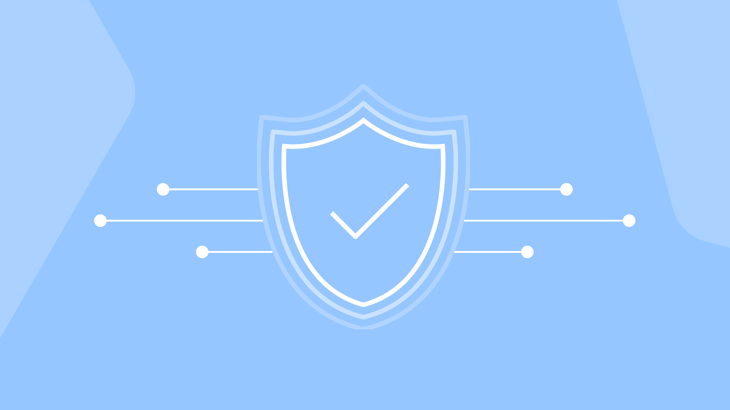 Cyberattacks have become more sophisticated and harder to detect in recent years, placing enterprises in ever more vulnerable situations. In order to meet increasing security compliance requirements, enterprises are pouring investment into application security solutions to protect their business-critical apps from looming threats.
Cyberattacks have become more sophisticated and harder to detect in recent years, placing enterprises in ever more vulnerable situations. In order to meet increasing security compliance requirements, enterprises are pouring investment into application security solutions to protect their business-critical apps from looming threats.
According to a recent forecast by Forrester Analytics, spending on application security solutions is expected to grow to $7.1 billion by 2023, implying a 16.4 percent compound annual growth rate from 2017.
In 2021 alone, attacks on software supply chains surged by a whopping 650 percent. Open source projects can be particularly vulnerable if not implemented and maintained properly for the enterprise. Hackers try to infiltrate the enterprise software supply chain, which consists not only of third-party components, but also of the CI/CD systems, source code management tools, communication networks, and IDEs.
At Vaadin we pay particular attention to these weak points to ensure your enterprise applications are secure.
Photo by Markus Spiske on Unsplash
Why enterprise application security matters
Today more than ever, customers are conducting business online and, as companies undergo large-scale digital transformations, enterprise systems and software are becoming more complex, blurring the boundaries of our physical and virtual environments.
Security breaches can have a detrimental impact on your brand image, hinder customer trust, and reduce employee productivity. Especially in the era of hybrid working, where employees’ are using their own device and network, security concerns are on the rise. Organizations should increase security measures to protect sensitive data, ensure customer privacy, and safeguard their intellectual property from cyberattacks, data theft, and ransomware.
For example, SolarWinds was the subject of a large-scale cybersecurity attack that spread to the company’s clients in early 2020. Threat actors gained access to SolarWinds’ development infrastructure and injected malicious code into Orion update binaries. Over 18,000 customers automatically pulled trojanized updates, planting backdoors into their systems and allowing bad actors to exploit private networks at will.
Recommended reading: The definitive guide to securing your Vaadin application with Spring Security
Photo by Philipp Katzenberger on Unsplash
Reducing the risk: Enterprise app security best practices
Application security doesn’t start with the first line of code; it begins with designing the architecture of the entire system. Even when an organization’s own defences are good, it could still be susceptible to a supply chain attack.
According to the latest ENISA report, in order to compromise the targeted customers, attackers targeted suppliers in in 66 percent of reported incidents. One of the ways enterprises can safeguard their software is by applying application security best practices into their software development lifecycle.
Below, we list a few key pointers to consider.
1. Adopt the OWASP Top 10
Companies should adopt this document and start the process of ensuring that their web applications minimize these risks. Using the OWASP Top 10 is perhaps the most effective first step towards changing the software development culture within your organization into one that produces more secure code.
2. Implement a secure development lifecycle (SDLC)
A secure SDLC integrates security testing and other activities into the existing development process. The primary advantages of adopting an SDLC approach include:
- More secure software, because security is a continuous concern, rather than an afterthought.
- Design flaws are detected early, before writing the code.
- Costs are reduced significantly by early detection and resolution of vulnerabilities.
3. Educate employees and stakeholders
Protecting your organization from a cyberattack is not limited to your IT department. In a significant number of cases, humans are the weak point with 85 percent of breaches caused by human error. All employees, including top-level management, should be made fully aware of the risks of a security breach and the correct protocol to follow in such cases.
4. Use multi-authentication
Applying good cyber-hygiene can go a long way toward minimizing security risks. General guidelines include using multi-authentication, setting up firewalls and antivirus programs, as well as never sharing passwords or other secrets in the source code.
5. Perform code reviews on a regular basis
It’s good practice to have fresh eyes review your code by making use of security services to conduct penetration testing. Typically, penetration testing is performed annually and is based on a snapshot of a system at a certain point of time and a well-defined scope (often in the form of a test application). Testers comb through your code to find vulnerabilities that may be enticing to potential hackers.
Learn how to secure your Spring Boot-based Vaadin apps from common threats with our recent webinar.
Vaadin is secure by design
Vaadin powers business-critical apps in some of the largest financial, healthcare, and government institutions around the world.
The server-driven architecture of Vaadin Flow keeps the app running in a secure environment with a minimal attack surface, whereas Hilla (previously Vaadin Fusion) secures all endpoint communication by default and validates data integrity both on the client and server.
Get up to speed on our policy for receiving reports related to potential security vulnerabilities in our services and products, and how we communicate verified vulnerabilities to our customers.
Find out more about our industry-leading enterprise app security.